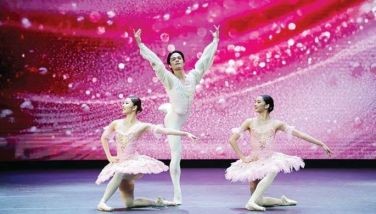So much sake that night!
Sake or saké is a Japanese alcoholic beverage made from rice and your favorite food columnist concedes that his knowledge about sake is very limited. When an invitation to “Sake Tasting” was received, it is without doubt that such summons will be accepted without any hesitation.
The event was held at the Chibori Shabu Shabu & Sushi Bar (Grd. Flr. CJRS Builiding, Asia Town, IT Park, Lahug. Phones 2333-833, 234-2551) which featured Sakes from Japan’s foremost Sake producer, Gekkeikan. Further inducement to attend such affair was the fact that the sakes would be paired with select Japanese dishes.
Sake is sometimes called rice wine and my beloved readers who have read my column “Wine here, Beer there and Distilled Spirits everywhere” know that true “wine” comes only from alcohol derived from fermenting the sugars found in fruits. On the other hand, the manufacture of sake is similar to beer; alcohol is produced from sugars (using a mold called Aspergillus oryzae) in grains like rice which occurs naturally as starch and this polysaccharide has to be converted to simple sugars like glucose. My loyal followers have known this process since college because they were trying to impress that cute seatmate in Chemistry 101.
“Wine generally contains 9–16 percent alcohol and most beer is 3–8 percent, whereas undiluted sake is 18–20 percent alcohol, although this is often lowered to around 15 percent by diluting the sake with water prior to bottling” (http://en.wikipedia.org/wiki/Sake). Gekkeikan, a premium sake manufacturer based in Kyoto, Japan provided six sakes for a select group to dissect the nuances of this beverage:
1. Zipang sparkling Sake
2. Namchozo Draft Sake
3. Horin Junmai Daiginjo
4. Taru Sake
5. “Sweet Hot Pack”
6. Nigori Sake
And because the company, Philippines Wine Merchants represented by Raymond Lim Joseph and Ruby Guinto, was extra generous that night, other drinks were available like the Gekkeikan Plum Wine. Your favorite food columnist had the desire for extra alcohol content and something unique, the Bizan Gold Shochu was available, a distilled beverage is with real gold flakes incorporated in the bottle.
I had an earlier acquaintance with the Zipang Junmai Sparkling Sake, naturally carbonated sake produced by Geikeikan Sake (U.S.A.) Inc. in Folsom, California in a previous assignment. The rest of the sakes are new to me but in any taste mission, I am guided by one simple rule; there is no rule on taste, as the preference for one type of wine over another is individual. As Rabelias once said “Drink what you like”. And my personal preferences were the Horin Junmai Daiginjo and the Taru Sake.
All these sakes were paired with food and the following were served that night: appetizers like Manta Ray Flakes with Japanese Mayonnaise Dip, Sashimi Platter, Sushi Platter with main dishes, the Various Pickled Vegetables, Fresh Vegetable Salad, Stewed Black Cod and Bamboo Shoots, Ebi Tempura and others. I found the Sushi Platter incredibly exceptional that night.
Until this moment, I am still waiting for an invitation to an authentic kaiseki (tea ceremony) and the accompanying kaiseki ryori, (tea-ceremony cooking). Present gyud ko for a taste of Japanese grande cuisine.
- Latest
- Trending





















